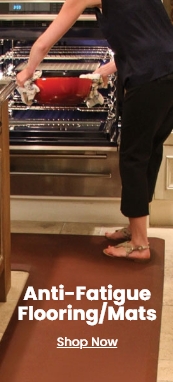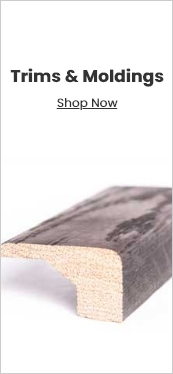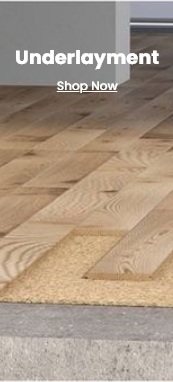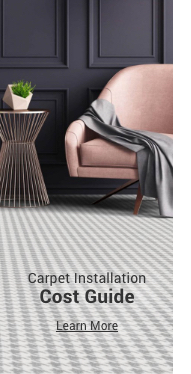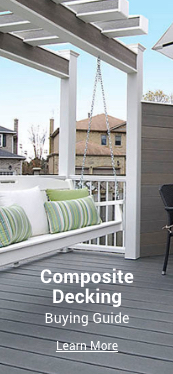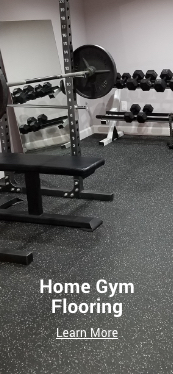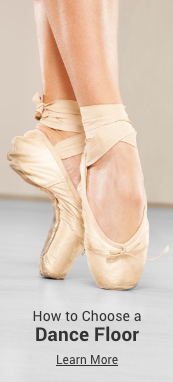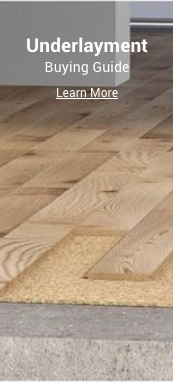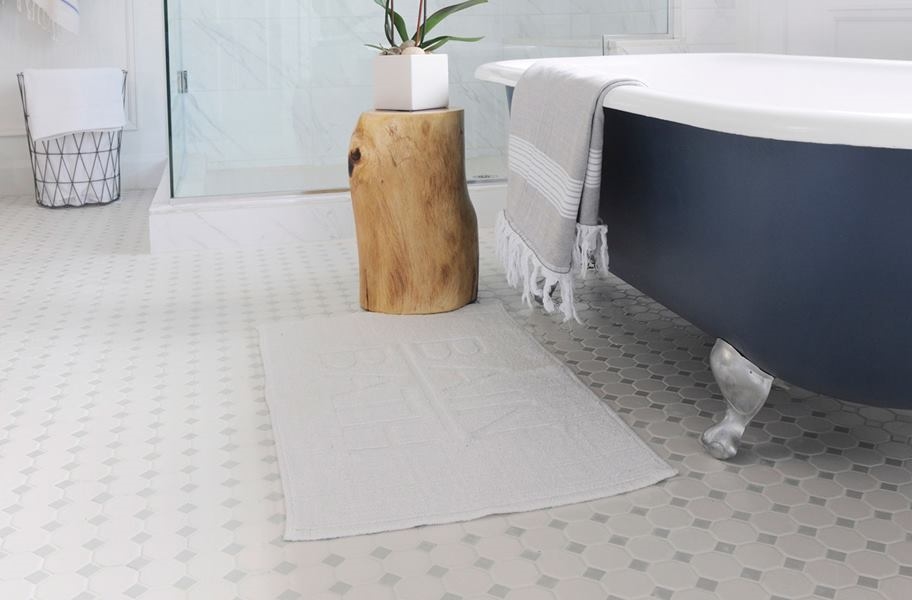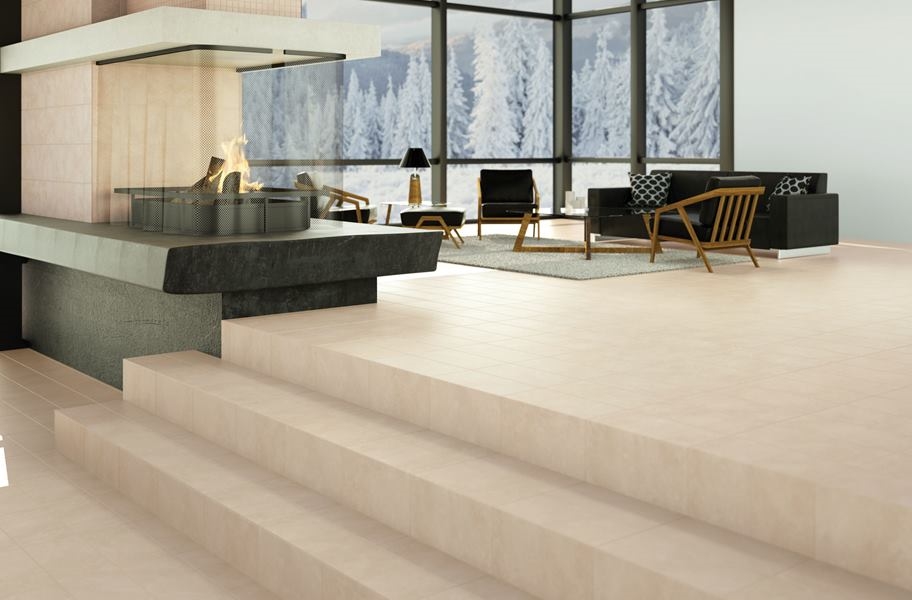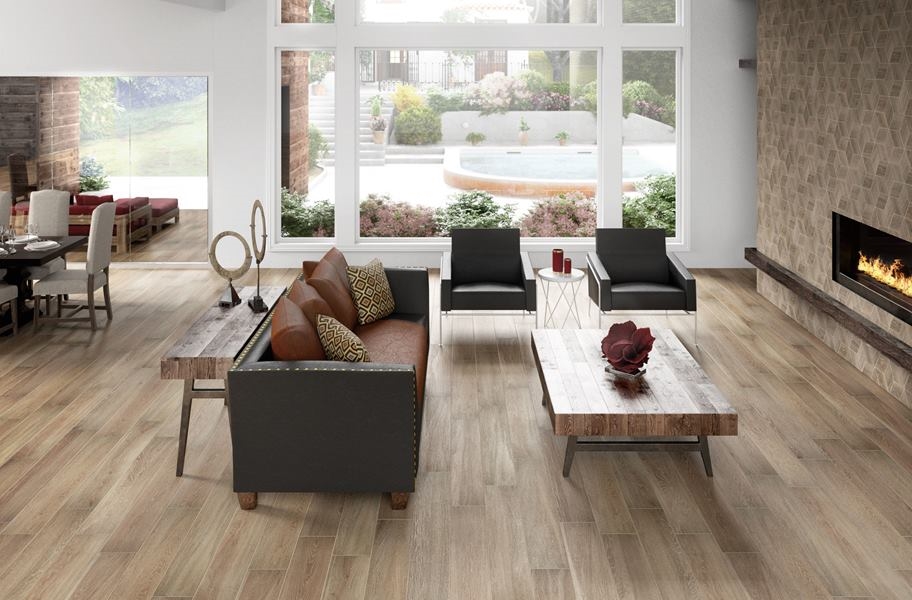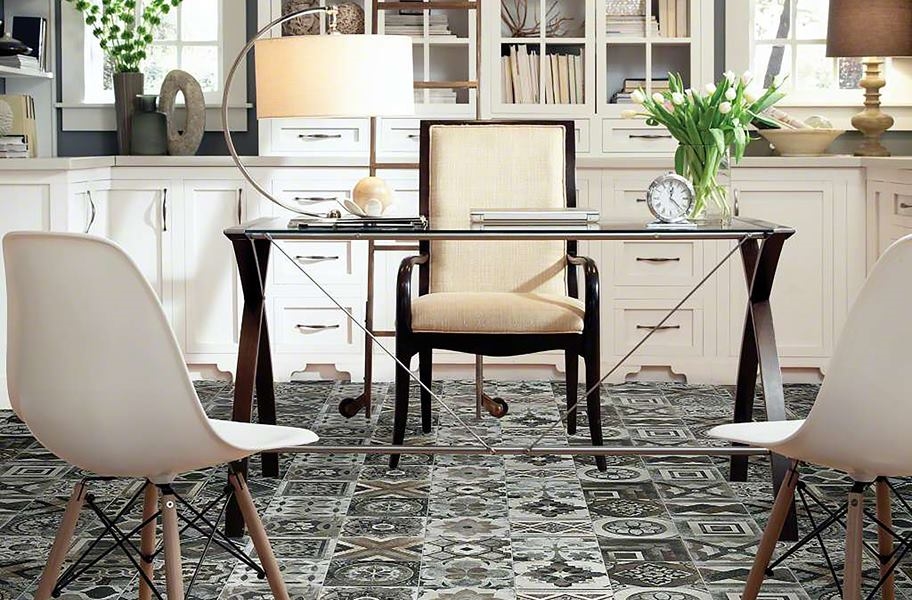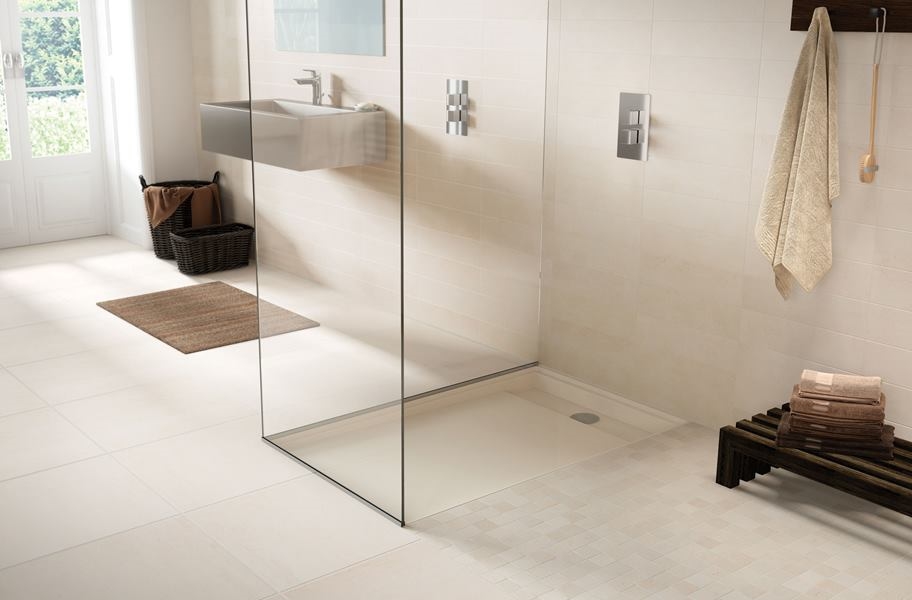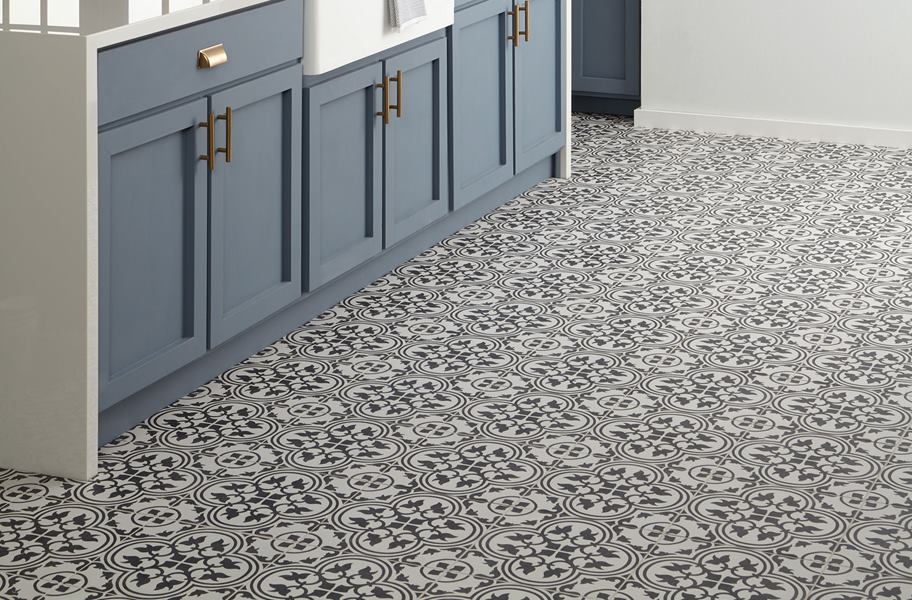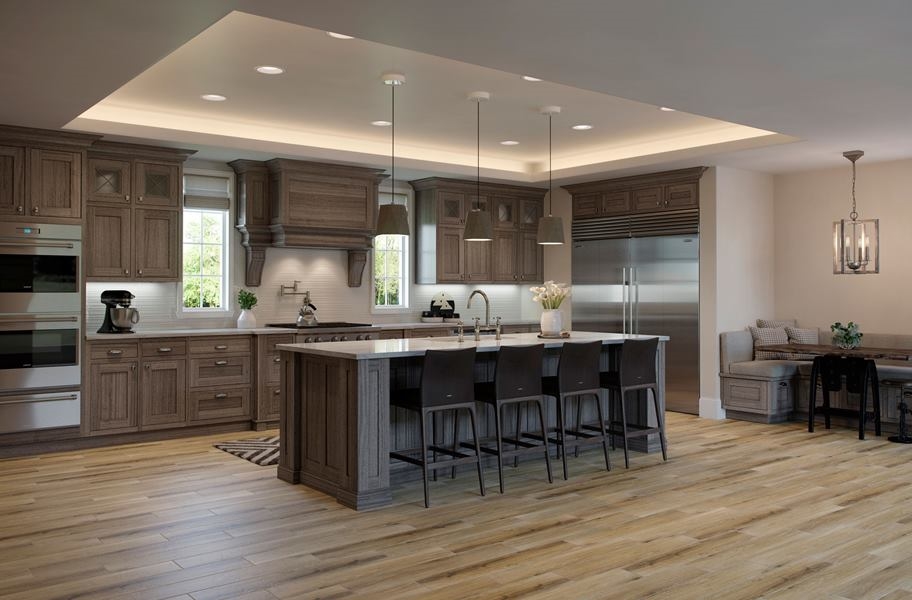Floor Tile Buying Guide: 11+ Tips to Become an Expert
| Fact Checked By: Ashley De Zeeuw
Published: October 24, 2019 | Updated: April 7, 2021
Ceramic floor tile is a water-resistant flooring option that is both durable and stylish. Perfect as a bathroom, kitchen, or shower floor tile, ceramic is a more affordable alternative to natural stone.
Tile has been the go-to flooring option for decades, so the odds are pretty good that you’re familiar with it, and you might even be considering it for your next floor. Still, you probably have some questions you want answered before you make your decision.
Good news! This guide is here to help you with that.
Read more to learn about the different types of tile, the pros and cons, how to install it, and much more in this in-depth floor tile guide.
Related Content >> Tile FAQ
What the Experts Say
“Tile can be made to look like wood or stone, so it’s an inexpensive flooring option for homeowners hoping to achieve that look. It’s stylish, durable and has relatively low-maintenance upkeep, making tile an ideal option for areas that may see a lot of foot traffic or spills. Because of its long-lasting nature, choosing to install tile flooring is a relatively safe bet for those concerned with resale value down the road.” – Liz Kane, Budget Dumpster
What’s the Difference Between Floor Tile and Wall Tile?
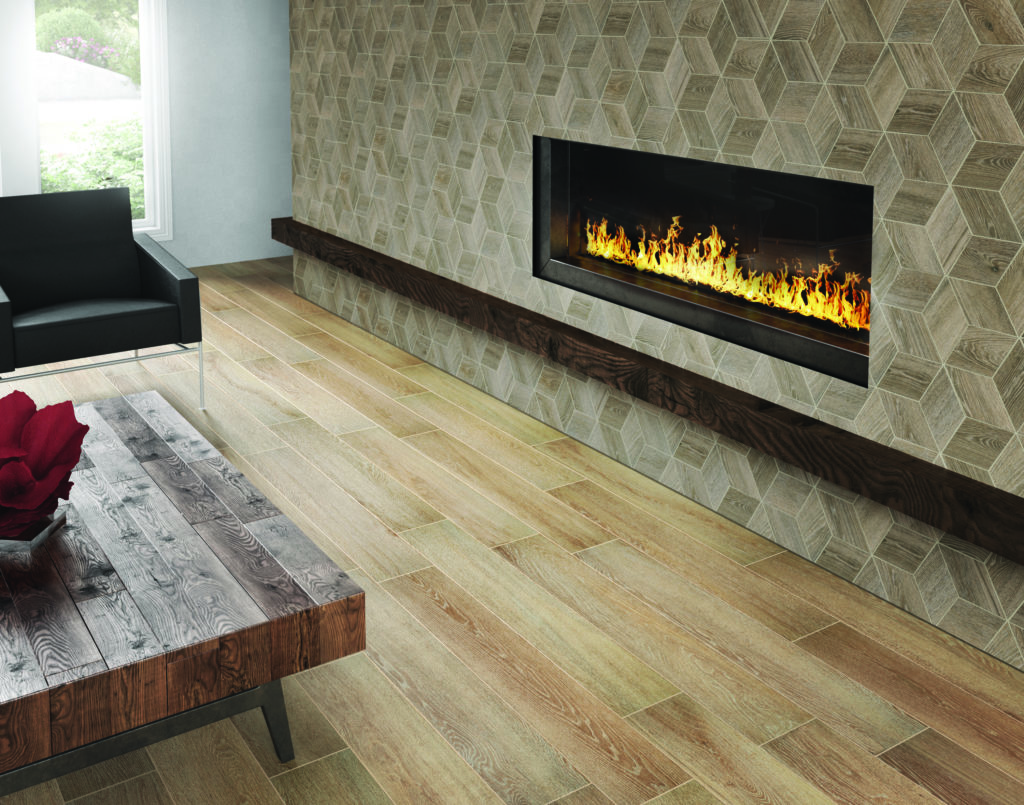
Floor tile is designed to be thick and sturdy enough to hold up against foot traffic, while wall tile is thin and light for easier installation. Some floor tiles can be installed on walls, depending on the size and weight.
I recommend you consult a professional before choosing to install floor tile on your walls. Lots of factors go into determining how flooring tile will work as a wall treatment. Meanwhile, wall tile won’t ever be a good option for flooring, simply because it’s too thin and delicate.
Related Content >> Wall Tile Buying Guide
Types of Floor Tile
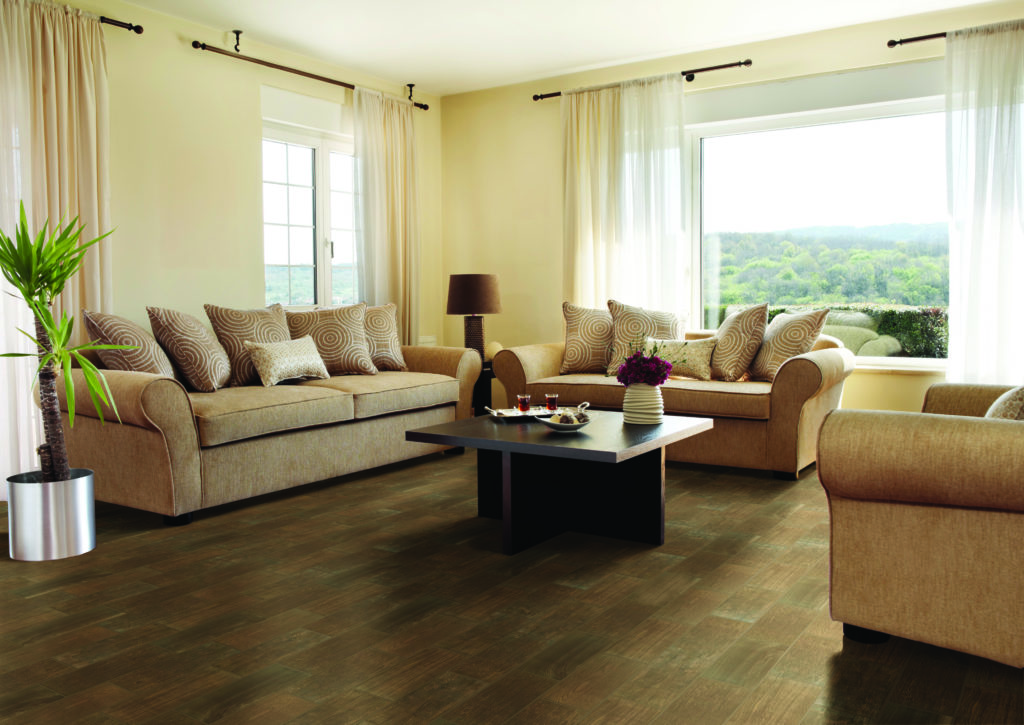
Though it might all look and even feel similar, not all tile is the same. Different types of tile will be better suited to you depending on your budget and your needs.
Discover the differences between ceramic, porcelain, and real stone, and then decide what option is best for you.
Ceramic Tile
Ceramic tile is made from a majority clay, mineral and water solution that is then pressed into a tile shape and fired in a kiln at a high temperature. Many ceramic tiles are glazed, and that makes them waterproof.
Unglazed ceramic tiles offer a more natural look that some people prefer, but they are only water-resistant, not waterproof.
Porcelain Tile
Porcelain tile is a type of ceramic tile, but it’s more durable and dense than other ceramic. For this reason, they are considered distinct from one another.
Porcelain is created using fused clay minerals and water. The clay is often comprised of feldspar, kaolin, and quartz. This combination of clay makes porcelain denser than ceramic clays.
Porcelain is waterproof whether or not it is glazed, so it’s a good choice for areas with a lot of moisture.
Natural Stone Tile
The naturally occurring patterns in stone floors are popular for a reason: they’re beautiful! With a huge variety of colors and textures to choose from, there is certain to be a genuine stone floor for your luxury interior design needs. Stone flooring is a good option to consider if you have the money.
Be aware, though, that natural stone requires more upkeep compared to ceramic or porcelain tiles. Natural stone needs to be regularly sealed and resurfaced to maintain its beauty.
| Related Content >> Porcelain vs. Ceramic Tile |
Tile Construction
Tile traditionally refers to ceramic and stone materials, but this section specifically explains the construction of ceramic tile. Learning how it’s made can help you understand where it will work best in your home.
There are many types of ceramic tile, but as a general rule, you can expect ceramic to be made from a mixture of clay and water. Denser clays, like kaolin, or any clays that contain quartz, create a more durable tile that is also water resistant.
All tiles will go through a drying and firing process that bakes out the water content and hardens the tile to be a durable, waterproof flooring solution. After that, it’s all about that glaze. But we’re not done yet! There’s so much more to learn about how tile is made.
Ceramic Tile Layers and Composition
Most ceramic tile is comprised of two layers: bisque and glaze. The bisque is the body of the tile- from the side this will be the thickest layer visible. The glaze is the top of the tile, where the color sits. Some tiles do not have a glaze- these tiles are often referred to as through-tile construction since they are solidly colored all the way through.
Ceramic is tile is made from a mixture of water and clay minerals. After a dryer removes some excess moisture from the mix, the tile is pressed into shape and left to dry on a rack. At this point, these tiles are called “green tile” or “greenware.” That’s because the tile has yet to be fired or glazed.
After the tile has been dried, a high-tech inkjet printer will add the desired colors and patterns. It’ll also be glazed to protect this image from wear and tear. Porcelain can also be left unglazed.
| Related Content >> Best Tile Flooring Options |
Firing Ceramic Tile
Once both ceramic and porcelain tiles are glazed, they will be fired to burn away any remaining moisture and to set the glaze. Porcelain is fired at an extremely high 2500F – higher than ceramic at 2000F. Since porcelain is fired at a higher temperature, and has denser clay materials, it becomes impermeable to water.
What is Tile Body Color?
The body color refers to the color of the bisque (or biscuit) that makes up the base of the tile. Body color doesn’t always match the top glaze, so if the glaze is chipped, the body color can be revealed.
Ceramic tiles typically have a red body, and they won’t match the glaze in most cases. Through body porcelain is manufactured with a through color. If the surface chips, the body color underneath will be the same.
There is also something called color body porcelain, for porcelain tiles that have a multi-color glaze pattern. In body color porcelain, the bisque of the tile matches the dominant color in the glaze. This design can often hide the appearance of chips, though not as completely as through body tiles.
| Related Content >> Best Bathroom Flooring Options |
Floor Tile Pros and Cons
What are the benefits of tile floors?
- Durable: Tile is one of the most durable flooring options out there, thanks to the firing and glazing process that makes it so tough. Porcelain tiles are especially resistant to scratches and high traffic.
- Stylish: Since tile can take on basically any color, shape, or size, there’s no end to the style possibilities.
- Easy to clean: Tile doesn’t require any special cleaning products. Simply sweep and mop tile flooring to keep it looking great.
- Low-maintenance: No need to polish or refinish! Your tile flooring will maintain its beauty without a lot of hassle.
- More affordable than stone: With ceramic and porcelain tile, you can get the look of natural stone without the price or the maintenance requirements
What are the drawbacks of tile floors?
- Difficult installation: Unless you spend a lot of your free time tiling floors, you probably won’t have the experience to perfectly tile your floor. I recommend hiring a professional. However, you can still make it into a DIY project if you’re determined.
| Related Content >> Tile Grout and Thinset Buying Guide |
Styles of Tile Flooring
You can find tiles in just about every style imaginable – that’s what makes this flooring so great! However, there are a few main style categories that are important to consider as you begin your search for the right floor.
“Ceramic tile comes in hundreds of styles, most of which are very cost-effective. Glazed tile allows for a lot of variety in color, and it can mimic the look of hardwood, but with a lower risk of surface scratches. Its long-lasting nature is great for homeowners’ return on investment, even years later.” – Liz Kane, Budget Dumpster
| Related Content >> How to Choose Tile |
Wood-look
Many tile “planks” feature the wood-look style that’s so popular right now. The surface of the tile is printed and textured to offer a natural appearance.
You’ll now see wood-look tiles even mimicking the trending textures of solid hardwood, including wire brushed, hand scraped and distressed looks. Each textured wood look comes with its own unique style and character.
Wood-look tile floors make your home look warm, modern and expensive. Choosing an ultra-durable tile over finicky hardwood will offer you an elegant look without the worry and maintenance of solid hardwood.
Stone-look
Tiles can be manufactured to look and feel like real stone. This look is really popular in kitchens and bathrooms, but it works great everywhere.
Popular stone looks include:
- Marble: Clean and classic, showing impeccable style. Shhh…they’ll never know it’s not real marble.
- Limestone: Known for its fossilized patterns, a limestone-look ceramic tile will instantly elevate the look of your room without the maintenance associated with soft, fussy limestone.
- Travertine: Popular in neutral brown tones, travertine appears more textured than marble and other natural stone looks.
- Slate: Often in darker natural tones with higher color variation, slate-look tiles provide a distinctive look that makes your flooring a focal point in your space.
Patterned
If you’re not a big fan of natural looks and textures, there’s no need to worry! Tile offers plenty of bright colors and creative patterns to add some personality to your home.
You can choose from classic or art deco designs, and everything in between. Some tiles are now even coming in sets that you can mix and match to create a unique “patchwork” kind of style.
| Related Content >> Tile Flooring Trends |
Floor Tile Shapes
From traditional squares to more adventurous designer shapes, tile has something to offer everyone. While there are a few common shapes that you’ll see wherever you look, I also want to point out some unique options that might be just what you’re looking for.
- Planks: Tile “planks” are shaped like a typical natural wood plank, though they are becoming wider as the wide plank trend grows.
- Subway/Rectangle tiles: The subway tile trend continues to grow each year as people discover its beauty and versatility. Based off the rectangular tiles in the early 1900s New York City subway stations, subway tiles are a staple of interior design.
- Circles: For a fun and modern look, circular tiles are a great option. Also known as penny tile, this rounded tile is often smaller and installed in a mosaic style.
- Designer shapes: The phrase “designer shapes” refers to a large selection of uniquely shaped tiles that offer a ton of personality. Trends in interior design are leaning toward hexagons, herringbone, chevron, and pebble tiles.
- Squares: Square tile is the gold standard for flooring. This traditional shape is at once trendy and time honored. If you want simple, clean lines, square tile is the best way to go.
| Related Content >> Tile Pattern Guide |
Floor Tile Sizes
Your choices aren’t over just yet! Once you know the style and shape of your favorite tile, you need to decide how big it should be. Both ultra large formats and tiny mosaic tiles are fashionable right now, so you can rest easy knowing you’ll be on trend no matter what you pick.
Large Format Tile Size
Tiles are considered a large format size when any size reaches 15″ or larger. These large tiles are growing in popularity for a lot of reasons.
First of all, they’re easier to clean since a larger tile means less grout in your floor. People also love the way large tiles can make small spaces feel more open. Installation can be more challenging, though.
Square Tile Size
Any square tiles ranging in size from 2” – 12” are considered standard sized tiles. Square floor tiles are most commonly 6” and larger.
These tiles are easier to install and easier to measure than larger sizes. Many of the most classic tile floors are standard size square tiles.
Rectangle Tile Size
Rectangular tiles offer a variety of size options, from subway tile to much larger planks. Subway tiles range in size from 1” x 3” to 4” x 16” so you have a lot of room to pick the size you like best in that style.
Planks also have a pretty wide range of sizes to choose from, especially since the trend of wide planks has become more and more popular. You can find sizes from 6” x 24” to 12” x 48” in tile planks.
Mosaic Tile Size
Any small tile ranging from .5” – 2” in one dimension is considered a mosaic tile. These tiny tiles can be squares, circles, and sometimes even thin “strips” of tile.
While beautifully detailed, they can make for a busy floor, so it’s a good idea to keep clean lines in the rest of the space.
| Related Content >> How to Clean Tile Floors |
Tile Flooring Patterns
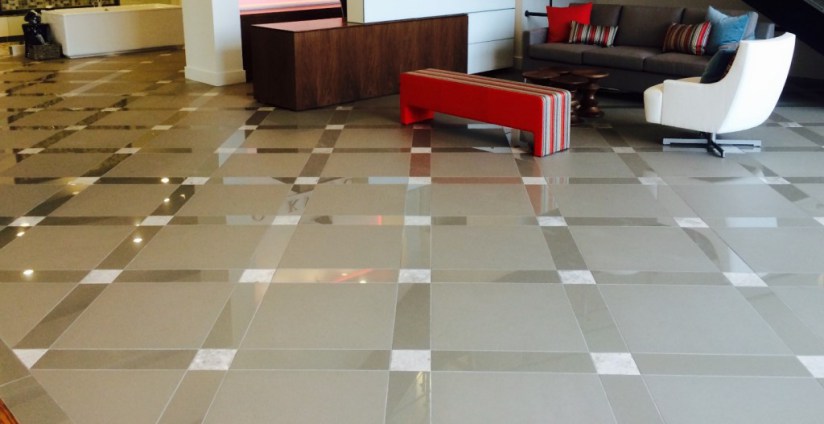
-
- Grid / stacked: This simple and modern pattern looks exactly like how it sounds. Square or rectangular tiles are set in straight, clean lines to create a traditional look.
- Offset / staggered brick: This is the most common pattern for laying bricks. The end of one tile is centered over the tile below it. This pattern is also known as a running bond.
- Herringbone: Rectangular tiles are set against each other at 45 degree angles, creating a detailed, intricate pattern. This look is popular with subway tiles.
- Diagonal: Square tiles are laid at a 45 degree angle in a diamond pattern. The diagonal style is used to make smaller spaces seem larger.
- Basket weave: A combination of larger rectangular tiles and small square tiles mimics the pattern of a woven basket. This pattern works in classic and contemporary styles.
- Versaille: To get a classy Versaille pattern, use four sizes of square and rectangular tiles in a repeating, interlocking design. This style is also known as the French or Ashlar pattern.
| Related Content >> Wall Tile Trends |
Floor Tile Finishes
We’re almost “finished” (get it?) with your choices for tile flooring. All you need to do is decide if you want a glazed, polished, or more natural unglazed look.
Glazed
The glaze is like the finishing touch to your tile. It works like a bodyguard to protect your tile from moisture and stains. Most ceramic tiles are glazed, but people sometimes prefer the natural, earthy look of unglazed tiles. Additionally, the glaze can cause these tiles to be more slippery when wet so we recommend using a textured tile if you plan to use a glazed tile in a bathroom or water-prone area.
Polished
For a truly flawless surface, polished porcelain floor tiles are ground down to a high polish just like natural stones like marble and granite. A polished finish protects your tile from absorbing dirt and debris, offering you a sharper looking floor with less maintenance.
Unglazed
Unglazed ceramic tiles have no extra finish added after firing. They often look more earthy and natural than glazed ceramic tiles, but they are not quite as impervious to liquid or as easy to maintain. While these tiles can (and are) still used in rooms such as bathrooms and kitchens, they will require more maintenance than their safeguarded glazed counterparts.
How to Tile a Floor
While some people would consider a DIY tile project too much of a challenge, it’s not impossible! With the right tools and enough preparation, your DIY tile installation will be a success.
Preparation
- Determine your installation type: There are two types of tile installation, depending on your subfloor. You will either be installing tile over concrete or over wood. If you have a wood subfloor, you will need to follow extra steps to achieve a successful installation. Always consult a contractor to see if your subfloor can hold the load of the tile, even if you choose to install on your own.
- Clean and level out your subfloor: This will give you a good foundation for a successful project.
- Preparing a wood subfloor: Measure and cut a cement backer board to fit the room, then adhere it to the subfloor with thinset. Screw the backer board into the subfloor, and reinforce the seams with glass fiber tape. Finally, cover the tape with thinset and let it dry completely before moving on to the next step.
- Unbox and mix up your tile: Minor color variations between manufactured batches can be more noticeable if you install tile box by box.
- Mix your mortar: Follow the manufacturer’s instructions to achieve the right consistency.
- Spread the mortar: Start in the center of the room and spread the mortar with your trowel. Then comb through the mortar with the notched side of your trowel.
Tile Installation
- Follow your reference lines: Lay your first tile in the center of the room, along the guidelines of your room.
- Place tile spacers: To ensure even spacing between tiles, use spacers along each edge. I recommend a grout joint of at least ⅛” in width.
- Level the tile: Once all tiles are placed in a section, level uneven surfaces by gently tapping them with a rubber mallet.
- Continue applying mortar and laying tile: Keep working along your reference lines until you reach the edges of the room.
Cutting Tile
- Measure your tile: find the difference between the edge of the room and the length of your tile. Mark the cut line on the surface.
- Use a tile cutter: For straight cuts, a tile cutter is the easiest solution. If your tiles are very thick, you may need to rent a tile saw.
- Evening jagged edges: If any breaks occur, you can remove jagged pieces and smooth the edge. Simply use a tile nipper to work off the uneven edge. You can also file away rough edges.
Grouting Tile
- Prepare the grout: Remove all tile spacers and mix the grout using the manufacturer’s instructions.
- Apply the grout: Using a grout float, smooth the grout into the gaps between your tiles. Remove as much excess as you can. Let it dry for the amount of time recommended by the manufacturer.
- Clean grout lines: Wipe down the grout with a wet sponge to set the grout, and then use a grout haze to clear the surface of the tile.
Finishing
- Let the grout cure: Wait at least three weeks after grout application before sealing the joints.
- Install all trims and moldings: Once all the trims and transitions are in place, your project is complete. Congratulations!
| Related Content >> How to Tile a Floor |
Why Choose Tile Flooring
- Versatile: This is flooring you go to when you have a specific style in mind. No other flooring offers you the options of tile. Even better, tile works great in every room of the home.
- Trendy: Tile can take on a wide variety of shapes, colors, and sizes, so it will always be on trend. You can pick from the hottest styles or opt for a more classic look.
- Durable: Glazed porcelain tile is especially durable, and a great choice for high traffic areas. The glaze can protect against scratching, and regular wear and tear isn’t an issue.
- Increased home value: Quality tile naturally boosts the value of your home. It’s durable, water-resistant, and beautiful on top of all that.
- Waterproof options: While options like unglazed ceramic aren’t totally waterproof, there are plenty of tiles that are! Porcelain is perfect for high-moisture areas like bathrooms and kitchens, so you won’t have to worry about water damage. Keep in mind that not all tile is slip-resistant, however.
Now that you’re an expert on tile flooring, it’s time to explore your options!
ORDER FREE SAMPLES SHOP ALL FLOOR TILE












